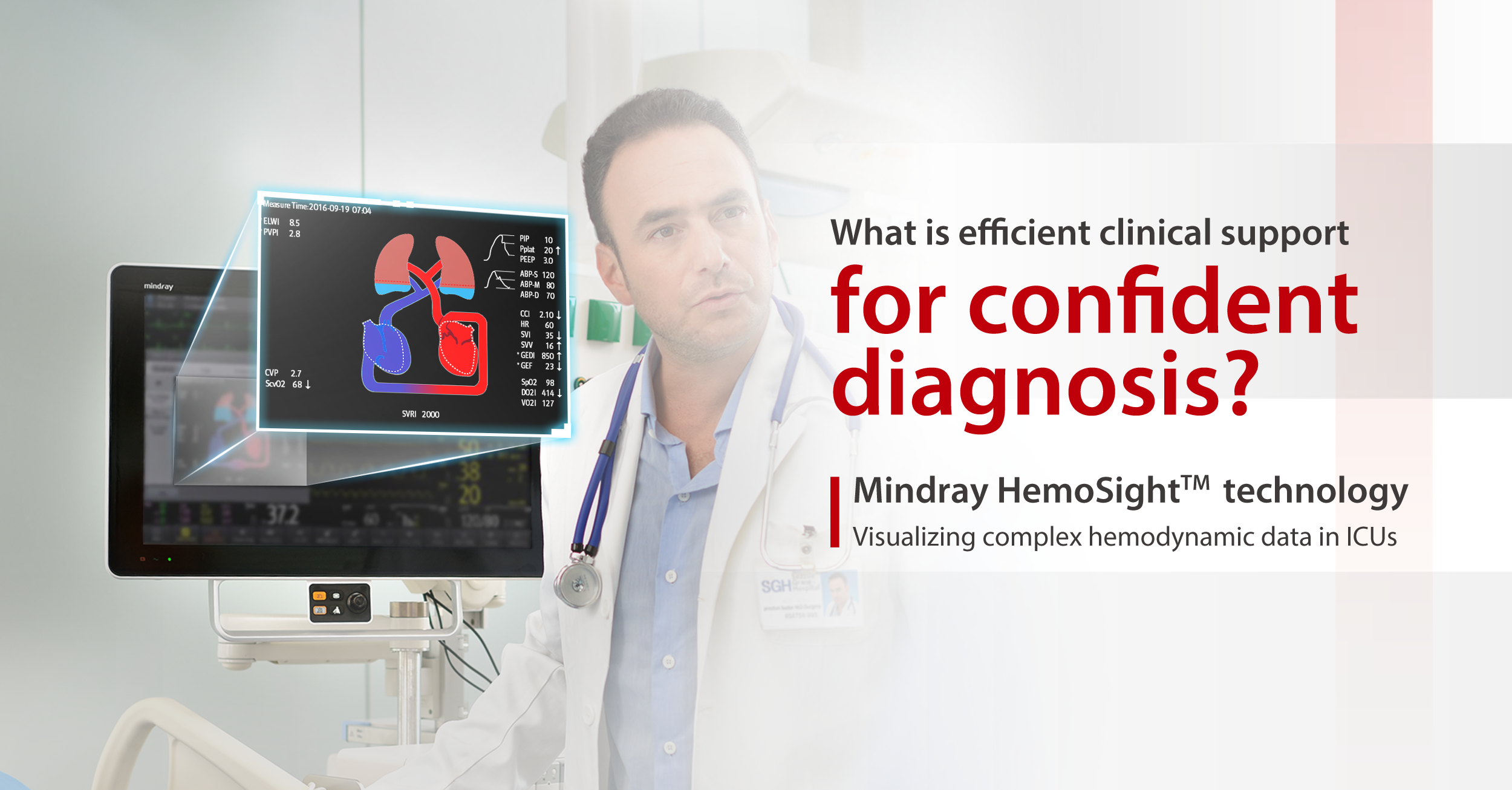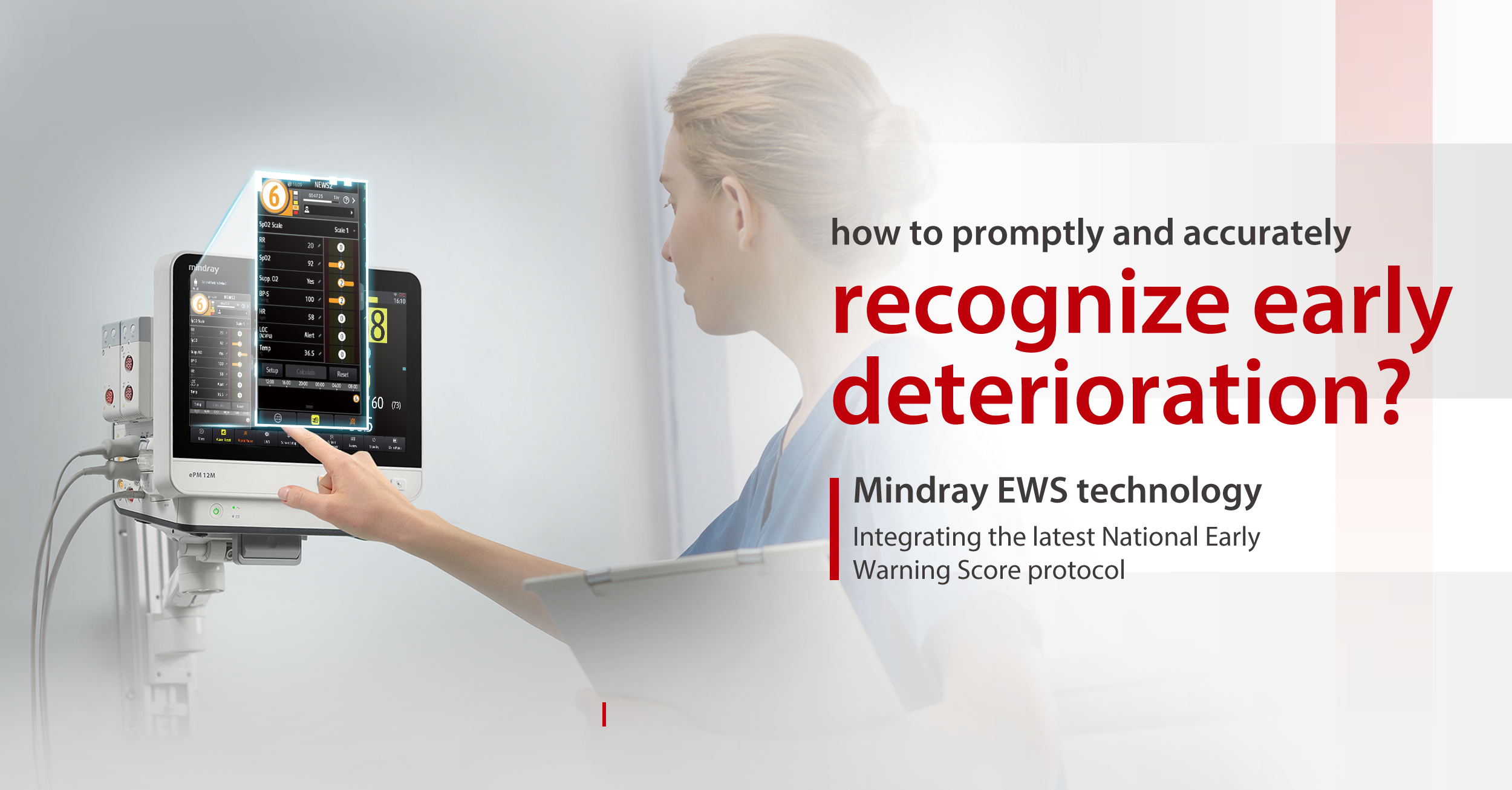Clinical Assistive Applications improving clinical decision making and optimizing workflow
By Nandini Shukla, Product Manager – Patient Monitoring & Connectivity Solutions, PMLS, Mindray India 2023-10-23

Artificial intelligence and related technologies are beginning to be applied to healthcare, which have potential to transform clinical decision support and perform key healthcare tasks in a better way by automating many aspects of patient care. In a patient monitor, advance tools in form of Clinical Assistive Applications (CAAs) can help to predict treatment protocol which is linked to the human body’s analogy to function. Many features in patient monitor enable faster clinical decision-making since they are based on intuitive infographics.

HemoSight
One of clinical challenge in NICU is how to identify apnea of prematurity (AOP event) and distinguish from periodic breathing. Patient Monitor employs the apnea guideline and provides an intuitive OxyCRG interface, in which the apnea event will be identified as ABD category and alert in visual,audio, text and light, so the nurses can notice the event timely and take treatment. Especially for neonatal patients who are more prone to ABD events like apnea, bradycardia and desaturation, patient monitors are now designed with special screen layout, making it simpler for clinicians to review these events with triggered time tag. Such screen based on periodic breathing algorithm,greatly decrease false alarms, and helps to effectively identify apnea and remind caregivers to notice the event timely and make it more accurate to decrease the possibility of unnecessary intervention and enable smooth clinicians’ workflow.
Alarm
Another clinical challenge in NICU is how to control the oxygen concentration as an appropriate level to prevent the ROP (Retinopathy of prematurity) and BPD (Bronchopulmonary dysplasia). Patient Monitors are now equipped with a dashboard to show the set target value and abnormal period of SpO2, PR and PI. When the SpO2 reading is higher or lower than the target, the numeric area will highlight, so the nurse can notice this event easily. 24 hours of SpO2 statistics bar chart can show the percentage of target SpO2 and it can help doctor to evaluate the treatment effect. Such dashboards are also available for other parameters like ECG, SpO2, IBP, PI, PR, CO2, Respiration, NIBP, and Temperature. Users can define the target parameter and review the statistics accordingly.
Alarm fatigue occurs when hospital staff become desensitized to alarm alerts causing missed alarms or delayed response affecting patients’ safety. With multiparameter fusion technology, the complex algorithm automatically fuses ECG, SpO2, or IBP signals together to identify false alarms during the analysis process and achieve more accurate arrhythmia analysis results.

CAAs provide qSOFA & SOFA scoring, help in early recognition of sepsis, and assist proper treatment by integrating multiple ways to better reflect fluid responsiveness. CAAs have special dynamic intuitive graphical displays that allow better visualization enabling a holistic understanding of hemodynamic status and integration of patient’s vital data facilitating better study on heart-lung interaction.
